Since Reproductions are made from "Molds made of Sand". When a molten metal is poured in the mold, naturally, some of the grains of sand will be fused in the surface of the casting.
The old foundries had sophisticated surface finishing equipment. Plus, a hundred years of wear has also produced a very Smooth Surface for the original Doorstops.
On some forgeries of poor quality you are able to detect this sand on the surface by gentley. rubbing your hands over the doorstop in question. You can actually feel the grains of sand or a roughness on the surface.
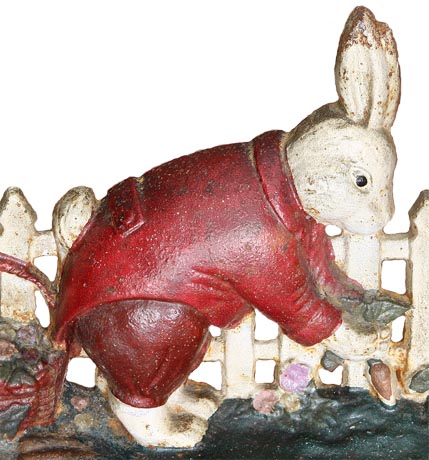
Sometines, by Eyesight, you can even detect this surface.
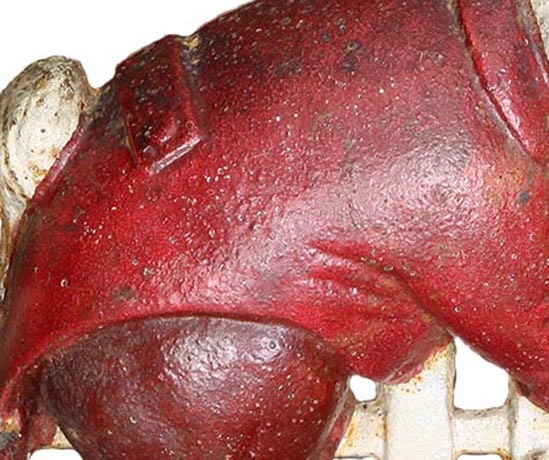
A doorstop mold has 2 halves, one half contains the features of the front of the doorstop & the other half, the contours of the doorstop back. When casting the doorstop, the 2 halves of the mold should come together tightly enough so that no molten cast iron leaks out between them.
Below is the same Doorstop: "Jenny Lind"
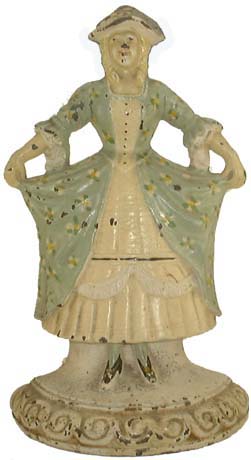
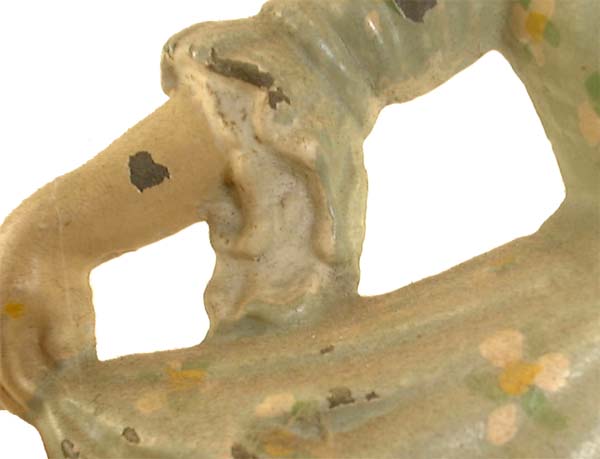
The Edges are pricise but not sharp to the touch.The above doorstop was made by Hubley. Their molds halves were well made and fit together with precision.
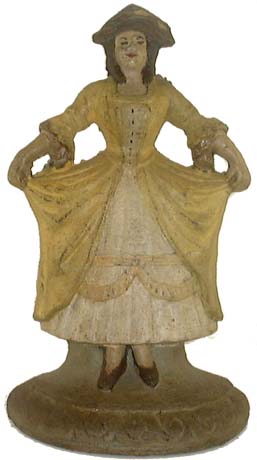
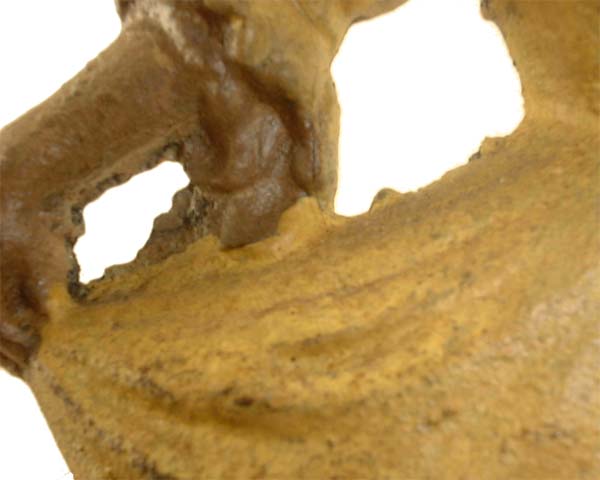
Note the Openings are not well defined. The edges have a crust where the metal has oozed out at the interface of the 2 mold halves.
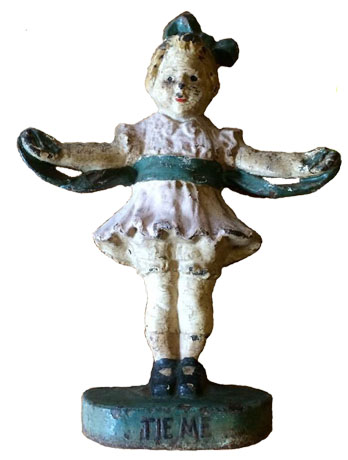
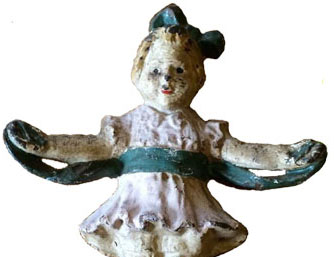
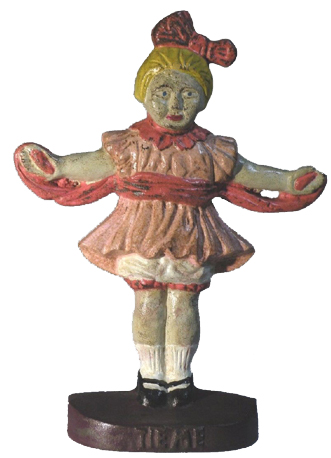
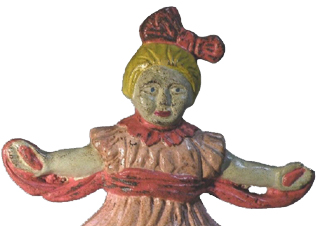
The Openings under the arms are so crusty the left side has completely closed up.

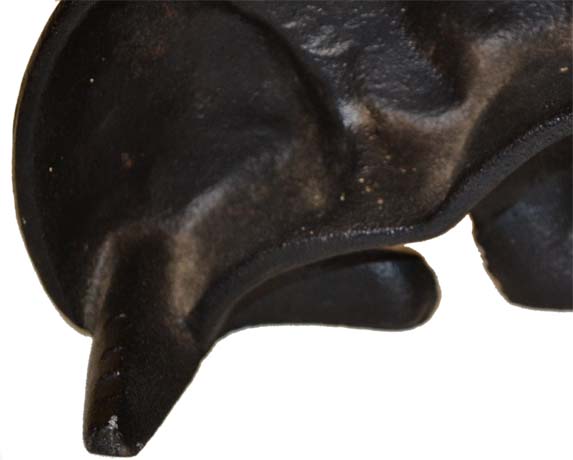

 A Flat Head Screw is what was used to hold the old
A Flat Head Screw is what was used to hold the old
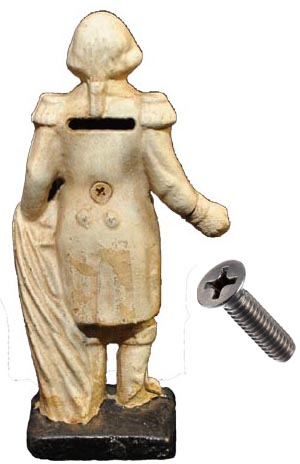 If a "Phillips Head" Screw is used, the Doorstop is a
If a "Phillips Head" Screw is used, the Doorstop is a
Do not take apart multi-piece doorstops if the screw head is painted over. An undesireable void in the paint will result.
Note -- the view on the right shows the two halves do not fit together properly.

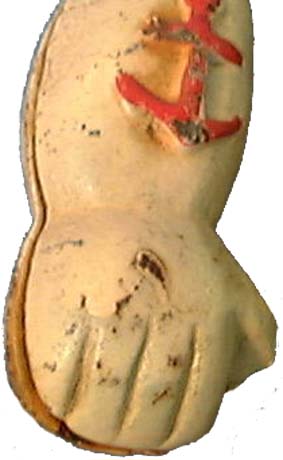
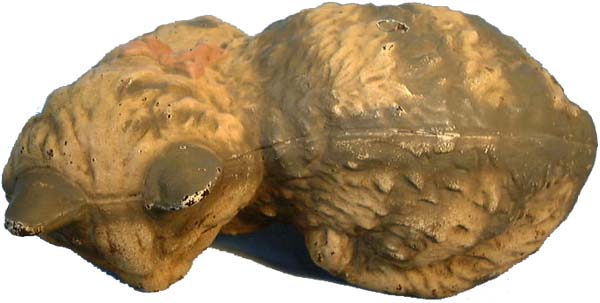

Note -- the 2 different bottom constructions on Fido doorstops below.
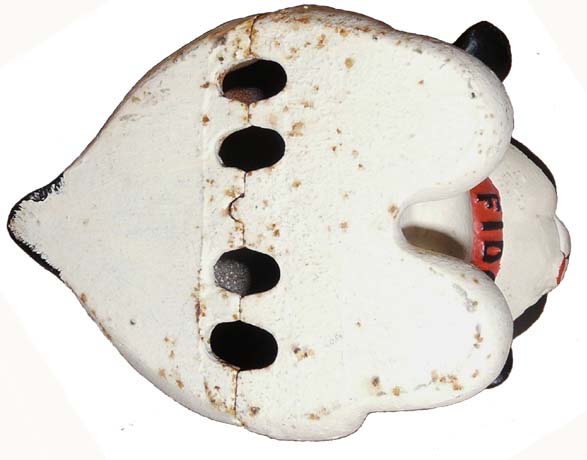
The Reproduction
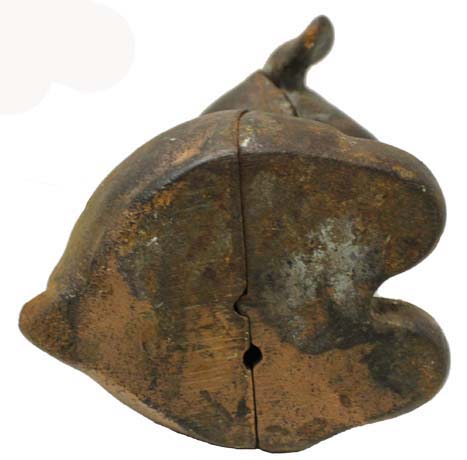
The Antique Original